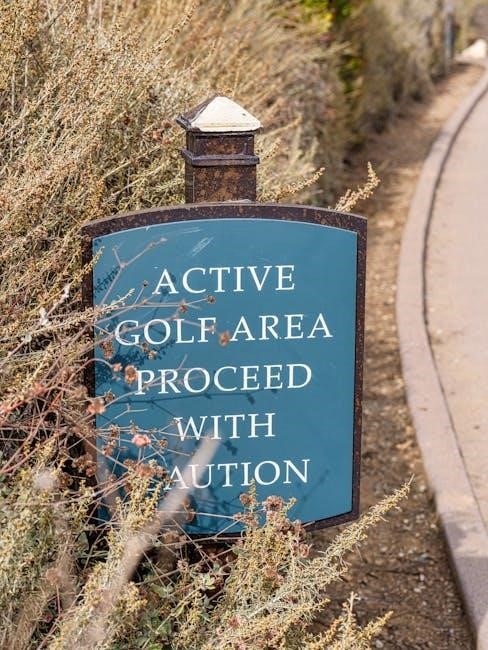Raiding in Rust is a dynamic activity demanding strategy, skill, and adaptability․ Whether a lone wolf or part of a group, mastering raiding is essential for survival and progression․ It represents a treasure hunt where players employ tactics to overcome base defenses․

Understanding Raid Preparation
Before embarking on a raid, thorough preparation is critical for success․ This involves meticulous scouting to identify vulnerable targets, assessing base layouts, and planning entry points․ Resource gathering is also key, ensuring sufficient explosives, ammunition, and tools are available for breaching defenses․
Scouting and Target Selection
Effective scouting is the cornerstone of a successful raid․ Begin by observing potential targets from a distance, noting base size, layout, and activity patterns․ Identify potential weaknesses in the base’s design, such as poorly reinforced walls or easily accessible entry points․ Consider the location of the base; bases built into hillsides might offer fewer flanking opportunities․
Pay attention to the residents’ online activity․ Raiding an online base can be more entertaining, but it also carries greater risk․ Offline raids are considered immoral by some but can be more efficient․ Assess the resources needed to raid each potential target, and factor in the potential loot reward versus the cost․
A poorly chosen target can waste valuable resources and alert other players to your presence․ Prioritize bases that offer a high return on investment, considering both the loot potential and the difficulty of the raid․ Also, remember that numbers can overwhelm anyone, no matter how well executed a RUST base design strategy
Resource Gathering and Crafting
Before initiating a raid, meticulous resource gathering and crafting are paramount․ Determine the necessary explosives, ammunition, and tools based on the target’s defenses․ Common raiding tools include satchels, C4, explosive ammunition, and rocket launchers․ Prioritize gathering resources efficiently by utilizing tools like the Stone Hatchet for rapid wood and stone acquisition․
Crafting benches and mixing tables are essential for creating raiding materials․ Recycle components found at monuments and along roads to acquire scrap for research and crafting․ Research tables allow you to unlock blueprints for advanced explosives and weapons․ Remember that low-grade fuel is crucial for powering furnaces and mixing tables․
Coordinate with your team to delegate resource gathering tasks effectively․ Designate roles for mining, crafting, and securing resources to optimize efficiency․ Consider the server’s wipe cycle and prioritize acquiring blueprints early to gain an advantage․ Efficient resource management is key to a successful and cost-effective raid, ensuring you have ample supplies for breaching and securing loot․

Executing the Raid
Executing the raid requires coordinated breaching techniques and efficient loot securing․ Communication and teamwork are crucial for success․ Utilize gathered resources and crafted explosives to overcome base defenses, aiming for quick entry and minimizing potential counterattacks, securing valuable loot effectively․
Breaching Techniques
When executing a raid in Rust, mastering various breaching techniques is crucial for success; One common method involves using explosive ammunition with semi-automatic rifles, coupled with silencers for silent raids․ This approach allows for a stealthier entry, minimizing unwanted attention and offering a tactical advantage, particularly in mid- to late-game scenarios․ Keep in mind that a sheet metal door requires 65 explosive ammunition rounds to breach, so carrying ample supplies is essential․
Alternatively, satchel raiding offers a more explosive option, albeit with an element of chance․ Four satchels are typically needed to break through a sheet metal door, although some may turn out to be duds, adding unpredictability to the process․ For those seeking maximum destructive power, C4 explosives remain a reliable choice, though resource-intensive to acquire and deploy․
Consider the base’s construction material and layout when selecting your breaching method․ Wooden structures are more vulnerable to flamethrowers or melee weapons, while reinforced metal requires stronger explosives․ Always prioritize safety and tactical awareness during the breach to avoid unnecessary risks․ Remember, each technique has its pros and cons, and your choice should align with your resources and goals․
Securing the Loot
After successfully breaching a base in Rust, securing the loot becomes the immediate priority․ Swift and efficient action is crucial to minimize exposure to counter-attacks․ Designate team members for specific roles: one group to continue guarding entry points, while another focuses on gathering and organizing the loot․ Prioritize valuable items like weapons, ammunition, resources, and blueprints․
Employ a systematic approach to loot collection, moving from room to room and consolidating items in a central location for efficient distribution․ Be mindful of potential traps or hidden compartments within the base, as defenders may have anticipated a raid․ Maintain constant communication among team members to coordinate movements and share information about potential threats․
Establish a secure extraction route before commencing the raid, ensuring a clear path to your base or vehicle․ Consider using smoke grenades or distractions to mask your departure and deter pursuit․ Once the loot is secured, promptly evacuate the area, avoiding prolonged exposure that could attract unwanted attention․ Remember, speed and coordination are essential for a successful loot extraction, maximizing your gains while minimizing the risk of loss․

Counter-Raiding Strategies
Rust requires robust defenses against potential raiders․ Effective base design is key, incorporating layers of protection and strategically placed traps․ Employing defensive tactics, like well-coordinated watchtowers and counter-offensive maneuvers, will enhance base security and deter attackers․
Base Design for Defense
Crafting a formidable base is paramount for defense․ Upgrade walls and doors to higher tiers like stone, sheet metal, or armored for increased resistance․ Consider compartmentalizing your base to slow down raiders․ Multiple access points allow you to flank attackers easily․
Building uphill provides a defensive advantage; moving downhill facilitates counter-assaults․ Remember, numbers can overwhelm even the best base designs, so fortify your defenses accordingly․ Incorporate airlocks and strategic turret placements to deter intruders․
Conceal your valuable loot within hidden stashes underground, marking their locations for easy retrieval․ YouTube content creators offer base-building tutorials with constantly updated designs to keep you safe․ A well-designed base can be the difference between being easily raided and being virtually impenetrable․
Prioritize upgrading your base’s defenses as soon as possible to protect your resources and progress․ Investing in a strong defense saves you from losing time, resources, and progress․
Defensive Tactics and Traps
Beyond base design, defensive tactics and traps are crucial for repelling raiders․ Utilize sound cues to detect approaching enemies, differentiating between animal and player footsteps․ Be prepared to fight at the first hint of danger, whether you’re farming or secure in your base․
Employ shotgun traps and flame turrets to deter intruders․ Design killboxes that funnel enemies into chokepoints․ Coordinate with teammates to defend your base effectively․ Remember, online residents provide a more engaging defense than offline bases․
Consider building in the snow for added security, though it requires more cloth for warmth․ Islands offer a defensible base location but require boating skills․ Utilize elevated positions to gain a tactical advantage over attackers․
Learn to effectively use weapons like the bolt-action rifle with a scope for long-range defense․ Communicate with allies and strategically position yourselves to maximize your defensive capabilities․ Prepare for retaliation after a successful raid, as your base may become a target․

Post-Raid Considerations
After a raid, prioritize loot management and base security․ Secure your gains and reinforce defenses against retaliation․ Anticipate counter-raids and adjust your strategy accordingly․ Effective planning minimizes losses and maximizes long-term survival in Rust, considering that today is 03/06/2025․
Loot Management and Base Security
Following a successful raid in Rust, efficient loot management becomes paramount․ Immediately categorize and store acquired resources in designated containers to prevent confusion and potential loss during subsequent raids or counter-attacks․ Prioritize high-value items such as weapons, ammunition, and building materials, ensuring they are secured in well-defended areas of your base․
Base security is equally crucial․ Assess any damage sustained during the raid and promptly repair or reinforce affected areas․ Upgrade walls, doors, and other structural components to higher tiers to deter future incursions․ Consider adding additional layers of defense, such as external walls, gatehouses, or strategically placed turrets, to create a more formidable perimeter․
Implement a robust locking system with unique codes and regularly change them to prevent unauthorized access․ Be mindful of potential weaknesses in your base design and address them proactively․ Furthermore, diversify storage locations to minimize losses if one area is compromised․ Regularly monitor your base for signs of tampering or potential breaches, ensuring a swift response to any threats․ Maintaining vigilance and proactive defense strategies is key to safeguarding your hard-earned loot and ensuring long-term survival․
Dealing with Retaliation
Successfully raiding a base in Rust often invites retaliation․ Anticipate potential counter-raids by bolstering your base defenses immediately post-raid․ Reinforce walls, add turrets, and strategically place traps to deter attackers․ Monitor the surrounding area for suspicious activity, such as players scouting your base or gathering resources nearby․
Prepare a quick-response team to defend against incoming threats․ Equip them with appropriate weaponry and ammunition, and establish clear communication channels․ Consider creating a secondary base or stash location to store valuable loot in case your main base is compromised․ Be prepared to relocate if necessary, and avoid becoming predictable in your movements․
Diplomacy can also be a viable option․ Attempt to negotiate with the raided players, offering compensation or resources in exchange for peace․ However, be cautious and assess their intentions carefully․ If negotiation fails, be ready to defend your territory and protect your resources․ Remember, a strong defense and strategic planning are essential for surviving the aftermath of a raid and mitigating the risk of retaliation․
